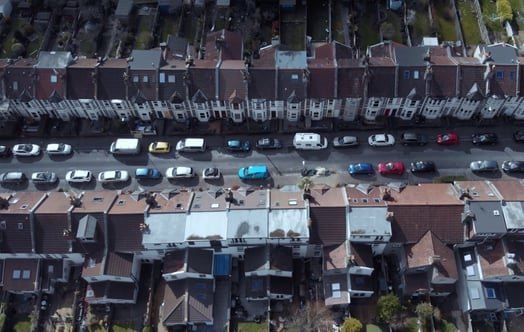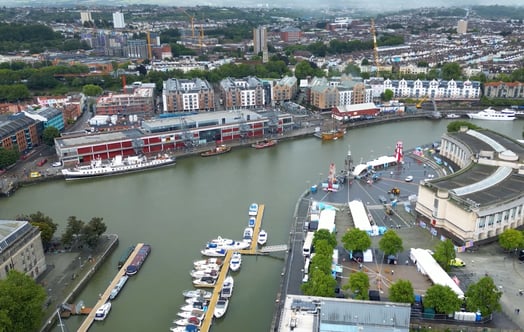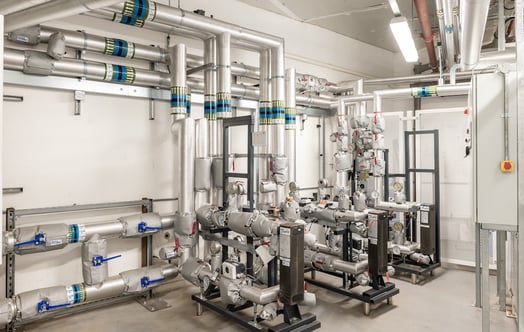Bristol Heat Network Connection FAQs
Frequently asked questions
What is the plan for the Bristol heat network?
We’re working to expand the existing Bristol heat network and develop new networks, with the long-term goal to interconnect them to serve the local community with reliable, low carbon heat. Our goal is to provide enough heat for the equivalent of 12,000 homes by 2030.
We plan to use a combination of air source heat pumps (ASHP) and water source heat pumps (WSHP) to support the majority of yearly demand. Additional capacity for winter peaks will be supported by thermal stores and electric boilers. Our long-term goal is to bring in waste heat from outside of the city centre to support further expansion.
What are the carbon emissions achieved by the Bristol heat network?
We’re working as part of Bristol City Leap to decarbonise the city. We have contractual commitments to decarbonise heat and support Bristol City Council to reach net zero targets. This includes not installing any new permanent fossil fuel energy centres following our purchase of Bristol Heat Networks Limited in January 2023. We’ll also decommission all existing gas assets by 2030.
What is the connection process for a building?
- Our Bristol business development team will ask you for information about your building or proposed scheme so that we can provide a high level feasibility and connection proposal.
- We’ll complete a detailed connection assessment including proposed buried network route, plant room design, heat demand capacity and a detailed programme.
- Connection fee and heat agreement are issued.
- Contracts are shared and terms are signed.
- You're passed into the safe hands of our Delivery team who will guide you through the civil and M&E works. This includes the technical design of the buried network spine, collaborating with your stakeholders on the M&E specification and manufacturing, as well as granting plant room and conduit route access.
- Installation and commissioning of the buried network and your substation.
- A safe and high quality connection is our primary objective, so we run final checks and then hand you over to our Operations team who will be in charge of all maintenance and servicing.
- Sit back and enjoy heating and hot water hassle-free! Our customer experience team are on hand to help when you need us.
Do I need a heat substation for my plot?
All sites connecting to a heat network require a heat substation within the site. Our space requirements are similar to a traditional plant room, ideally located in the basement or ground floor.
The substation hosts a plate heat exchanger to ensure separation between the primary heat network (the entire Bristol heat network) and the secondary networks (the heating system which circulates through the building or buildings, serving residents or businesses). This heat exchange marks the point of ownership for bulk supply connections e.g., a residential block, commercial building with multiple occupants and social housing.
What are the access requirements for the plant room?
We’ll liaise with you for detailed requirements, but in general we require access for a conduit route (installation of buried network and future access for maintenance, repair, and replacement), the substations (as operators of the heating system we need 24/7 access to look after you) and ideally the Heat Interface Unit (using a utility cupboard corridor to allow for ease of access and maintenance).
How much is the connection charge for my plot?
In Bristol, Vattenfall supply heating and hot water to the building boundary, which is referred to as a bulk supply connection. This supply represents a competitive cost option compared with an on-site, low carbon alternative such as an ASHP.
To connect to the Bristol heat network, there is an upfront payment based upon the standard cost in £/KW of connection capacity. Charges then compromise of two parts: a fixed tariff (represents the standard service charge for heat supply) and a variable tariff (represents the actual amount of heat the building uses, which is metered at the building’s substation).
If you have any questions regarding connection charges, please contact us.
Can Vattenfall take on the responsibility for operating and maintaining secondary systems?
Yes, we do have scope to adopt secondary systems. We would operate and maintain the system and manage the interface with end users. For direct customers, we use electronic Heat Interface Units to capture energy usage and connect to our secure billing system.
Please contact us to receive our secondary system adoption specification
What is the alternative to connecting to the heat network?
Bristol’s planning policy stipulates that new developments must connect to a heat network. This decision was made as part of Bristol City Council’s ambition to reach net zero emissions by 2030. The Climate Change Committee has cited heat networks as the best decarbonisation solution for cities and is the only viable option in areas of electricity grid congestion and existing built environment, which are not suited for an individual ASHP.
Latest news from Bristol

How regulatory reform could drive Bristol's low carbon future
UK’s £13.2bn Warm Homes Plan signals net zero intent, laying groundwork for a fair low-carbon shift—though details remain unclear.

Bringing Vattenfall's 2050 vision for the Bristol heat network to life through the Bristol City Leap partnership
Bristol City Leap, with Vattenfall as key partner, is scaling heat networks to boost reliability and deliver low-carbon heat to half the city by 2050.

The Bristol heat network in 2025: 11,500 homes equivalent committed to decarbonising their heating systems
Vattenfall’s Bristol heat network now supplies low-carbon heat to 11,500 homes, driving the city’s net zero journey under Bristol City Leap.
